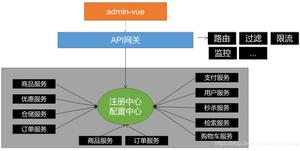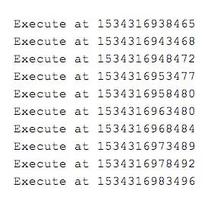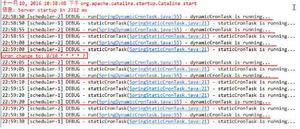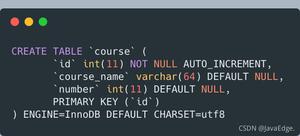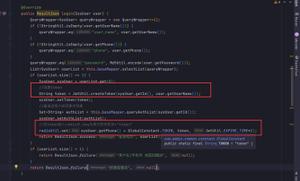详细聊聊Spring MVC重定向与转发
重定向和转发
重定向经过客户端,而转发没有,因此相对来说转发更快速。但有时采用重定向更方便,如:
- 重定向到外部网站;
- 避免用户重新加载页面时再次调用同样的动作。
return "redirect:/view/"+saveUser.getId();
这里使用重定向来防止当前用户重新加载页面时'''saveUser'''被二次调用。
但是使用重定向无法轻松地给目标页面传值,因此,在Spring3.1后提供了Flash属性,详情见后文。
常用处理方式
Controller 视图方法间的跳转,无非就是带参跳转和不带参跳转。常用的方法有通过 String 映射 RequestMapping 实现重定向,或者通过 ModelAndView 对象,又或者是 RedirectView 对象,下面逐一说明。
String 重定向
是 return 映射到另一个 Controller 方法的字符串。如果有请求参数,就拼接在 RequestMapping 映射的字符串后面。
// 返回字符串映射的方式
@RequestMapping("hello")
public String hello(HttpServletRequest req, HttpServletResponse resp) {
doSomething();
return "redirect:/bye";
// return "redirect:/bye?username=sudoz";
}
ModelAndView 重定向
另一种方法是通过返回 ModelAndView 对象来实现跳转。类似的,如果有请求参数,也可以通过类似 GET 参数拼接的方式:
// 返回 ModelAndView 对象
@RequestMapping("hello")
public ModelAndView hello(HttpServletRequest req, HttpServletResponse resp) {
doSomething();
return new ModelAndView("redirect:/bye");
// return new ModelAndView("redirect:/bye?username=sudoz");
}
RedirectView 重定向
还有一种方法是通过返回 RedirectView 对象实现跳转,该方法和上面的不同之处在于,RedirectView 对象不需要设置 redirect 前缀:
// 返回 RedirectView 对象
@RequestMapping("hello")
public RedirectView hello() {
doSomething();
return new RedirectView("/bye");
// return new RedirectView("bye?username=sudoz");
}
带参跳转
Model在重定向时会丢失携带的消息
在做方法跳转时,如果要把参数带给下一个方法,像上面代码里通过拼接 URL 参数的方法有时候并不实用。因为参数不一定都是是字符串,而且浏览器对 URL 的长度是有限制的。RedirectAttributes 对象可以用来保存请求重定向时的参数。利用 RedirectAttributes 改写上面的代码:
@RequestMapping("/")
public RedirectView hello(RedirectAttributes attrs) {
attrs.addAttribute("message", "hello");
attrs.addFlashAttribute("username", "world");
return new RedirectView("hello");
}
@RequestMapping("hello")
Map<String, String> hello(@ModelAttribute("message") String meaasge,
@ModelAttribute("username") String username) {
Map<String, String> map = new HashMap();
map.put("message", message);
map.put("username", username);
return map;
}
上面的代码中,调用 addAttribute() 和 addFlashAttribute() 方法往 RedirectAttributes 对象中插入了两个值,如果看源码,就能知道,RedirectAttributes 接口的实现类 RedirectAttributesModelMap 继承了 ModelMap,本质上就是 HashMap 的子类,因此可以用来存储 Key-Value 对。这两个方法都很常用,使用上也必然存在不同:
- addAttribute() 方法会把 Key-Value 作为请求参数添加的 URL 的后面;
- addFlashAttribute() 方法会把 Key-Value 暂存在 session 中,在跳转到目标方法后,即完成任务,会从 session 中删掉;
用 curl 命令来测试:
curl -i http://localhost:8080/
HTTP/1.1 302
Set-Cookie: JSESSIONID=D1CC5E15FA8EF9474C4CED7D4F660E66;path=/;HttpOnly
Location: http://localhost:8080/hello;jsessionid=D1CC5E15FA8EF9474C4CED7D4F660E66?username=sudoz
Content-Language: en-US
Content-Length: 0
Date: Thu, 16 Feb 2017 12:33:46 GMT
可以看到,通过 addAttribute() 添加的键值对变成了 URL 后面的参数,addFlashAttribute() 方法添加的键值对则没有出现在 URL 上,而是存储在了 session 中。跳转的目标方法通过 @ModelAttribute("key")注解指定接收的参数。
redirect 和 forward 的区别
上面列出的 3 种方法,其实都是 Spring MVC 在处理请求时的重定向,即 redirect 跳转。另一种分发请求的方式是转发,即 forward。二者的区别从 HTTP 的规范中就明确:
- redirect 的 HTTP 返回码是 302,且跳转的新 URL 会存储在 HTTP Response Headers 的 Location 字段中。客户端在接收到 Response 后,会发起另一次请求,这次请求的 URL 就是重定向的 URL;
- forward 的转发过程只发生在服务端;Servlet 容器会直接把源请求打向目标 URL,而不会经由客户端发起请求;因此客户端接收到的响应是来自转发后的目标方法,但是浏览器呈现的 URL 却并不会改变,且 forward 不能将参数转发出去。
附:请求转发与重定向的区别图例
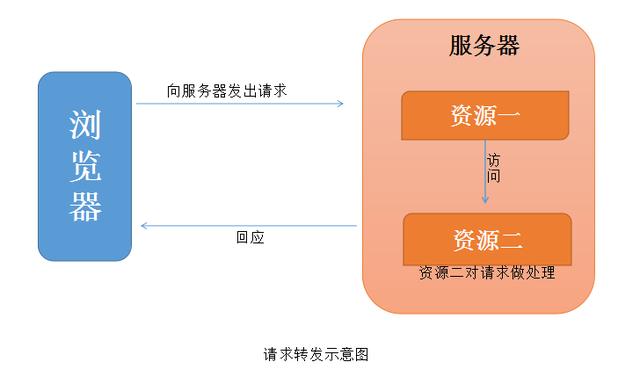
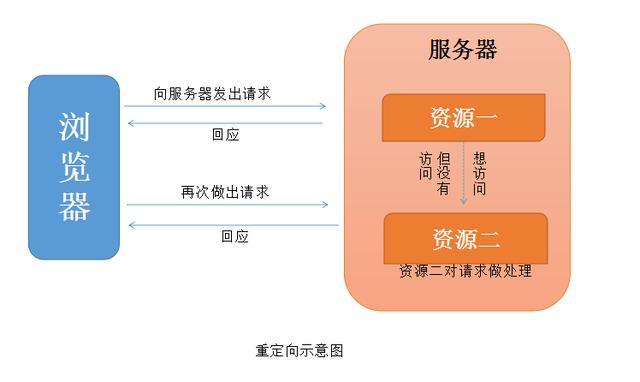
总结
到此这篇关于Spring MVC重定向与转发的文章就介绍到这了,更多相关Spring MVC重定向与转发内容请搜索以前的文章或继续浏览下面的相关文章希望大家以后多多支持!
以上是 详细聊聊Spring MVC重定向与转发 的全部内容, 来源链接: utcz.com/p/248687.html

